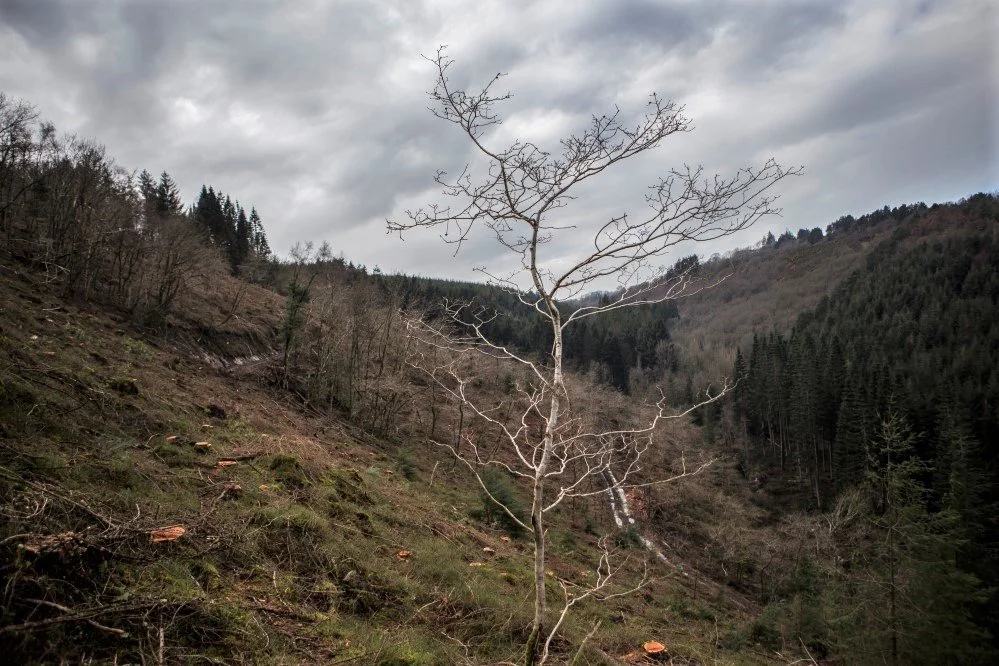Nature’s grand recycling plan
Now the trees are bare, and the night time frosts are crisping up the fallen leaves, it’s easy to focus on endings and the urge to tidy up our greenspaces and gardens. But these fallen leaves are a valuable food source and habitat, and if left to decay will release essential nutrients into the soil. It’s not an ending, just another phase in a continuous cycle.
The leafy woodland food bank
All life needs food, and in a woodland it’s the dead leaves, branches and plants that provide the raw materials. Decay and decomposition are often seen as the negative stage of a plant’s lifecycle, yet the goodness in this year’s leaves will help fuel the growth of future generations. The woodland food bank includes an army of unsung workers. It starts with a wide range of invertebrates including earthworms, beetle larvae, and millipedes, as well as slugs and snails. As the leaves are broken down and pulled into the soil by the earthworms, the surface area that fungi and bacteria can live on increases.[gallery type="slideshow" size="full" ids="4636,8840,7039,8846"]While we often only notice the fruiting spores of fungi, under the surface they have an intricate web of feeding threads or hyphae that look like fine plant roots. The hyphae break down the dead plant material by releasing acids and enzymes. The nutrients which are released including nitrogen and phosphorus, provide the food that the fungi need as well as, enriching the soil and making them available for trees and other plants. Sustainability to the core.
Dead wood homes
You may have noticed more fallen branches and dead wood being left in Fingle and your local greenspaces. It’s a recognition of the importance of allowing trees to grow, live and die naturally. During its lifetime, a tree will contain both living and dead wood, caused by a mixture of wind or animal damage, lightning strikes, or lack of light. This dead and damaged wood provides a wide range of roosting and nesting opportunities for woodland birds and bats as well as, microhabitats for invertebrates and fungi.It’s estimated that more than 2,000 species of invertebrates live on decaying and dead wood in Britain alone. As the mix of deadwood changes, so does the range of invertebrates and many are in decline due to the removal of dead and decaying wood. It also impacts on woodland birds, because across Europe nearly a third of them use tree cavities for roosting and nesting sites, and research has shown that the type and number of tree cavities is a limiting factor on their numbers.[gallery type="slideshow" size="full" ids="8200,8571,8197,7081"]About 75% of native bat species roost in trees and because they can’t bore holes, they make nests in natural cavities or ones that have been made by other animals including woodpecker holes. During the winter months they use holes that are either deeper or lower in the tree where its warmer, and during the summer move upwards towards the canopy for the same reason.Long lived native trees like the oak, beech, ash, hornbeam, and elm are the most valuable sources of deadwood and cavities because of their long life, slow decay rate and large size. At the other end of the scale is birch, whose shorter life and quicker decay rate can develop cavities and deadwood in 70 years, compared to a 100 years for oak, beech and ash.
The value of the natural approach
Research by Albrecht (1991) demonstrated the staggering difference of 50-200m3 of deadwood in unmanaged woodlands compared to 1-5m3 in ones that followed a clear felling cycle, and the 2019 deadwood survey at Fingle showed the impact of decades of following that approach. The survey showed that less than 3% of the wood was over the UK Woodland Assurance Standard (UKWAS) minimum threshold of 20m3 of deadwood per hectare, and the Fingle conservation plan and the work of volunteers are redressing this.
Closer to home
Last year proved how important being able to connect with nature is, and despite this month's cold weather, you'll be able to see catkins and snowdrops starting to appear in your local greenspaces and parks. How about making some additional space for nature in your garden this year? We can all make a difference by leaving leaves, dead and damaged branches, and log piles that invertebrates and small mammals can eat and shelter in. There are lots of ideas on the Woodland Trust site to inspire you, and you’ll be rewarded with natural hibernation spaces for butterflies like the comma, see lichens grow and create a space for nature.By Jane Halliday ReferencesWood Wise: Life In Deadwood - Woodland TrustCollecting and Removing Firewood: Is it Legal? - Woodland TrustAncient Trees - Woodland Trust‘Veteranisation – Making it as Good as Old’ with Friends of Fingle – Fingle WoodsWhat is a roost? - Bat roosts - Bat Conservation Trust (bats.org.uk)



